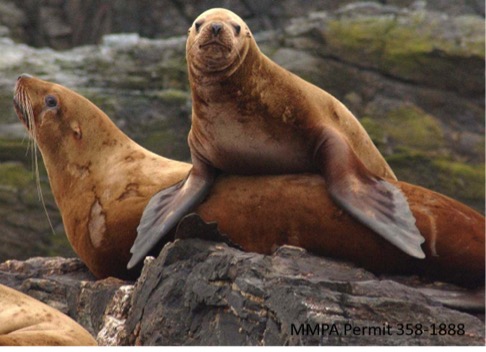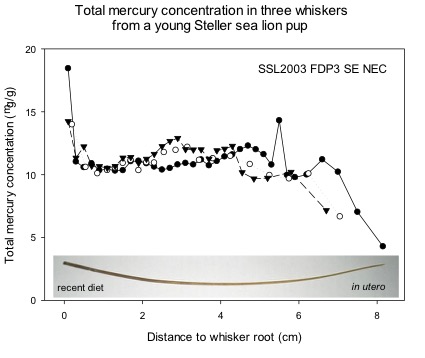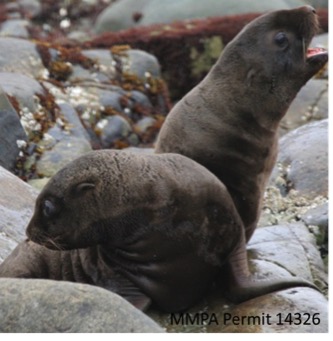A multi-seasonal history of mercury concentrations recorded in the whiskers of sea lions
 Angela Gastaldi is a Research Professional who joined the Marine Ecotoxicology and Trophic Assessment Laboratory (METAL) in the Water and Environmental Research Center in spring 2020. One of Angie’s first
research assignments was to determine if our Direct Mercury Analyzers were capable
of accurately measuring total mercury concentrations in tiny pieces of sea lion whiskers
(0.2 cm long).
Angela Gastaldi is a Research Professional who joined the Marine Ecotoxicology and Trophic Assessment Laboratory (METAL) in the Water and Environmental Research Center in spring 2020. One of Angie’s first
research assignments was to determine if our Direct Mercury Analyzers were capable
of accurately measuring total mercury concentrations in tiny pieces of sea lion whiskers
(0.2 cm long).
Why on earth does anyone care how much mercury is stored in the biologically inert whisker of a sea lion, you ask?
For the past 10 years our METAL research team and collaborators have measured total mercury concentrations in the hair of young Steller sea lion pups that is grown during fetal development. This gives us an index of how much dietary mercury the dams of these pups expose their fetus to during the period of gestation when that hair is grown. We have found that the amount of mercury varies widely based on where that pup is born (Southeast Alaska vs. the western Aleutian Islands, for instance), and likely based on their mothers’ food preferences.

So, hair can tell us about the mercury concentrations during the period over which the hair is grown, weeks to months prior to the annual molt (or in utero for the case of young pups). But what about other times of the year?
We know from stable carbon and nitrogen isotope patterns in the whiskers of adult female Steller sea lions that females tend to alter the fish, octopus and squid species that make up their diet based on the time of year.
Does this change how much mercury they are exposed to in different seasons? And thus, how much mercury crosses the placenta to their developing pups?
These offspring are a cohort of concern because mercury is known to impact neurological development in the fetus. The whiskers of Steller sea lions grow continually and provide a continuous multi-season, and multi-year record reflecting the contents of the diet of that animal. In the whiskers of young pups we can trace back through the first weeks of suckling, through late gestation and into mid-gestation, when we think the whiskers start to grow in utero. This provides about 6 months of information about what their mothers were eating while pregnant. It is much more difficult to capture adult female sea lions directly, but when we do, we can measure a dietary record over 2 to 7 years, depending on the age of the female and how much wear occurs on the tip of the whisker.

We are currently modeling the past diet of adult females using stable isotopes in these whiskers, and we also want to measure how these different diets impact how much mercury sea lions are exposed to at different times of the year. During the first couple of months of this method development we have determined that we can reliably measure total mercury concentrations in segments of whisker down to about 0.2 cm in length, which in some of our finer pup whiskers equates to about 0.3 to 0.5 mg of sample. Angie has also measured mercury concentrations in multiple whiskers collected from the same animals (collected from animals found dead on rookeries or haulouts). This has shown us that mercury is deposited in different whiskers in about the same amount, but there may be slightly different rates of growth in different whiskers on the same animal, depending on their length.
Now that we have developed the method, the next step is to measure total mercury concentration in small segments of whisker that we have archived for over 1000 young Steller sea lion pups. We will determine if mercury exposure to the fetus changes over the gestation period based on changes in the diet of adult females.

Images and graph above provided by Lorrie Rea.


